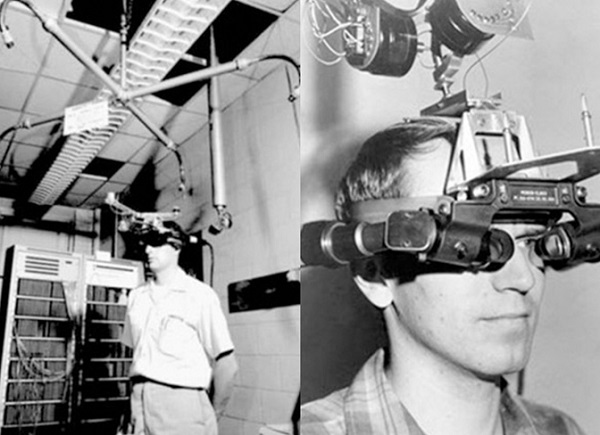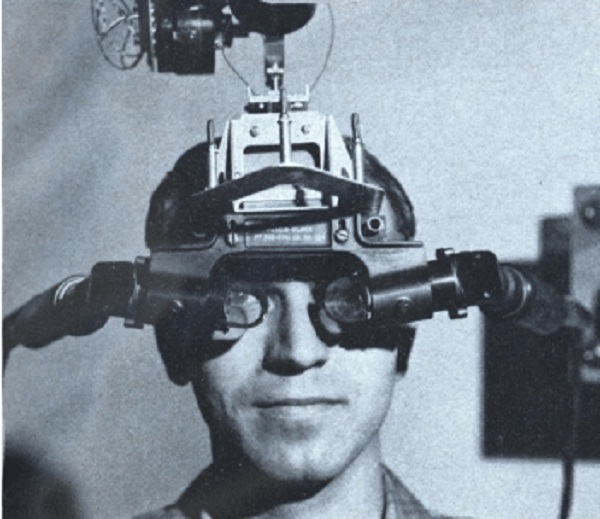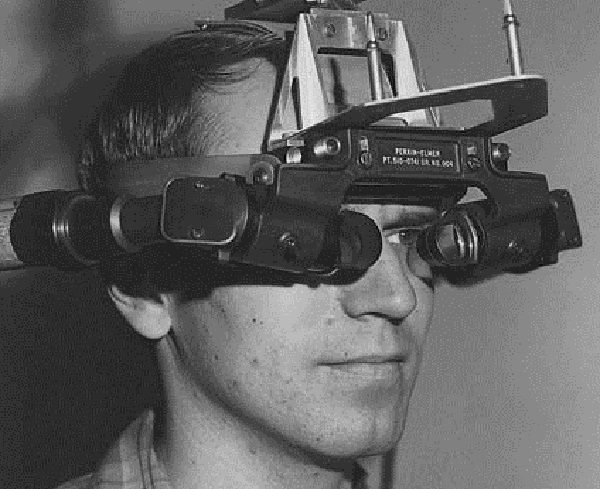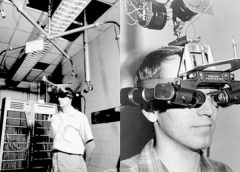
HMD Origins: The Sword of Damocles was the name for the mechanical tracking system and not the head-mounted display (which didn’t really have a name) and is widely considered to be the first augmented reality HMD system. The Sword of Damocles was created in 1968 by computer scientist Ivan Sutherland with the help of his students Bob Sproull, Quintin Foster, and Danny Cohen. Before he began working toward what he termed “the ultimate display”, Ivan Sutherland was already well respected for his accomplishments in computer graphics. At MIT’s Lincoln Laboratory beginning in 1966, Sutherland and his colleagues performed what are widely believed to be the first experiments with head-mounted displays of different kinds.
The Sword of Damocles Specs…
Name: The Sword of Damocles
Maker: Ivan Sutherland
Released: October 1968
Type: PC Powered
Display: X2 Minature CRT’s
Field of View(FOV): 40°
Refresh Rate: 10 Hz
Launch Price: Never Sold To Public
Weight: Unknown (Ceiling Mounted)

Features: The device was primitive both in terms of user interface and realism and the graphics comprising the virtual environment were simple wireframe rooms. Sutherland’s system displayed output from a computer program in the stereoscopic display. The perspective that the software showed the user would depend on the position of the user’s gaze – which is why head tracking was necessary. The HMD had to be attached to a mechanical arm suspended from the ceiling of the lab partially due to its weight, and primarily to track head movements via linkages. The formidable appearance of the mechanism inspired its name. While using The Sword of Damocles, a user had to have his or her head securely fastened into the device to perform the experiments. At this time, the various components being tested were not fully integrated with one another.

When Sutherland moved to the University of Utah in the late 1960s, work on integrating the various components into a single HMD system was begun. By the end of the decade, the first fully functional integrated HMD system was operational. The first display application was a cube suspended in the air in front of the user. The system itself consisted of six subsystems: a clipping divider, matrix multiplier, vector generator, headset, head-position sensor, and a general-purpose computer – which would make these the components of the first virtual reality machine as we know them today. The unit was partially see-through, so the users were not completely cut off from their surroundings. This translucence combined with the other features in their infancy is why the system is often cited as a precursor to augmented reality technology as well.
